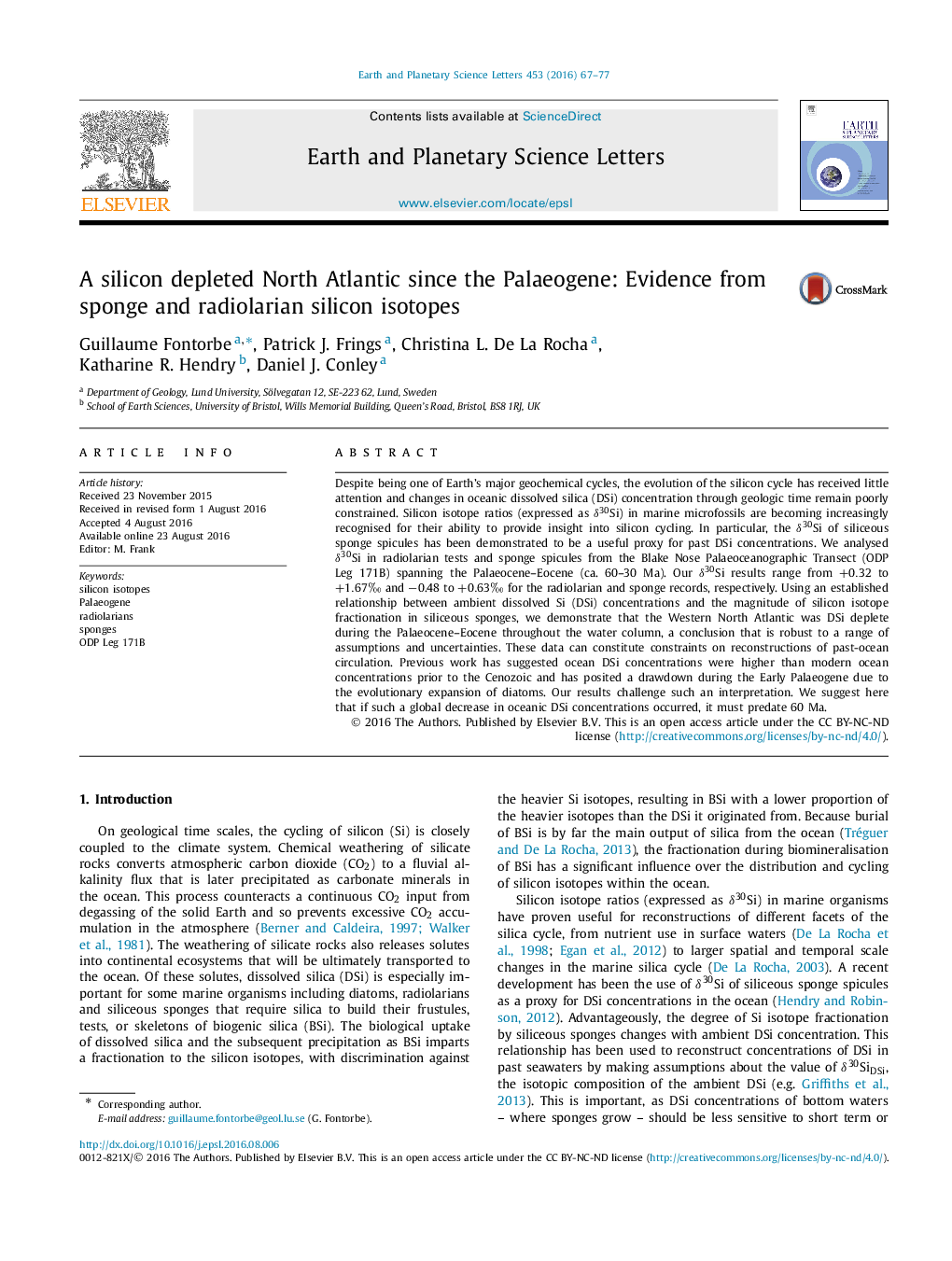| کد مقاله | کد نشریه | سال انتشار | مقاله انگلیسی | نسخه تمام متن |
|---|---|---|---|---|
| 6427142 | 1634703 | 2016 | 11 صفحه PDF | دانلود رایگان |
- First ever δ30Si from sponges and radiolarians spanning the Palaeocene-Eocene.
- Novel approach to constrain past oceanic DSi concentrations.
- Low DSi concentrations in the North Atlantic since 60 Ma.
Despite being one of Earth's major geochemical cycles, the evolution of the silicon cycle has received little attention and changes in oceanic dissolved silica (DSi) concentration through geologic time remain poorly constrained. Silicon isotope ratios (expressed as δ30Si) in marine microfossils are becoming increasingly recognised for their ability to provide insight into silicon cycling. In particular, the δ30Si of siliceous sponge spicules has been demonstrated to be a useful proxy for past DSi concentrations. We analysed δ30Si in radiolarian tests and sponge spicules from the Blake Nose Palaeoceanographic Transect (ODP Leg 171B) spanning the Palaeocene-Eocene (ca. 60-30 Ma). Our δ30Si results range from +0.32 to +1.67â° and â0.48 to +0.63â° for the radiolarian and sponge records, respectively. Using an established relationship between ambient dissolved Si (DSi) concentrations and the magnitude of silicon isotope fractionation in siliceous sponges, we demonstrate that the Western North Atlantic was DSi deplete during the Palaeocene-Eocene throughout the water column, a conclusion that is robust to a range of assumptions and uncertainties. These data can constitute constraints on reconstructions of past-ocean circulation. Previous work has suggested ocean DSi concentrations were higher than modern ocean concentrations prior to the Cenozoic and has posited a drawdown during the Early Palaeogene due to the evolutionary expansion of diatoms. Our results challenge such an interpretation. We suggest here that if such a global decrease in oceanic DSi concentrations occurred, it must predate 60 Ma.
Journal: Earth and Planetary Science Letters - Volume 453, 1 November 2016, Pages 67-77
